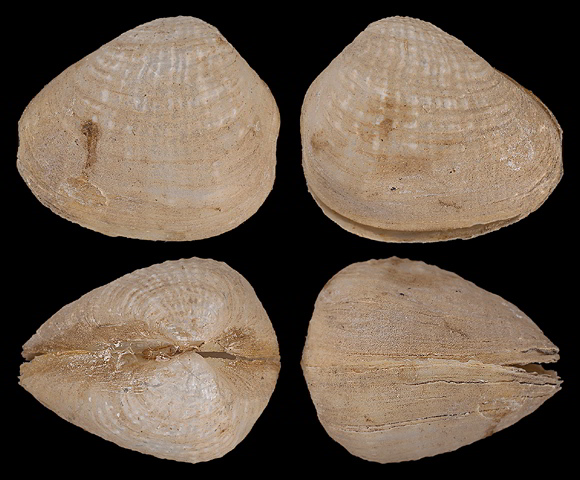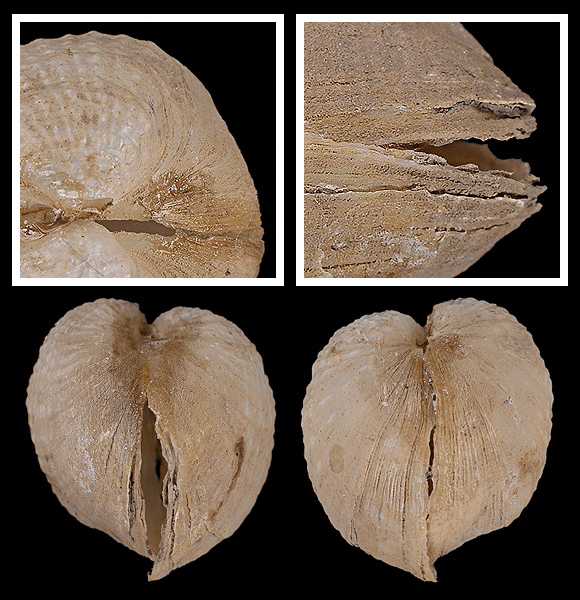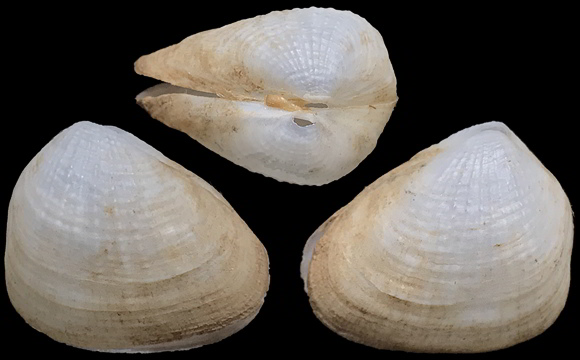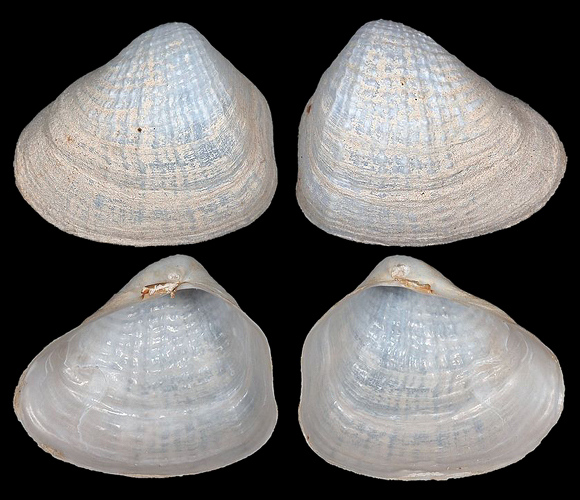
« Shell inequilateral, wedge-shaped, gaping at the posterior end, convex, of a pearly nature, thin, partly semitransparent, lustreless. Sculpture: 10-12 longitudinal ribs, besides some intermediate striae; these are more or less interrupted by strong periodical marks of growth, so as to give the ribs a nodulous appearance; the sides are ribless; the whole surface is covered with minute prickly tubercles. » – J. G. Jeffreys: “On the Mollusca procured during the ‘Lightning’ and ‘Porcupine’ expeditions 1868-70. (Part IV)”, Proceedings of the Zoological Society of London for the year 1881, London 1881, p.934.
Above and below: a specimen collected at 300-500m deep, off Anzio, Lazio, W. Italy. 29,8mm. Original pictures provided by A. Nappo (IT) – (CC BY-NC-SA) –

« Colour white. Margins rounded on the anterior side, inclining upwards towards the other side, which is also rounded but slightly truncate, sloping at the back from each side of the umbo. Beaks bluntly triangular, turned inwards. Umbones prominent. Ligamental pit in the right valve obtuse-angled, placed outside underneath the beak, and defined outwards by a thin plate. Hinge-line sloping towards the posterior side. Hinge-plate thin, sinuous, reflected. Teeth none. Inside highly glossy and nacreous. Scars inconspicuous. » – Ibid.

Original pictures provided by I. Mulero (ES).
– CC BY-NC-SA) –

– CC BY-NC-SA) –